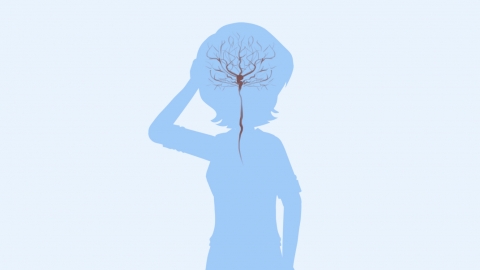What to do about blocked blood vessels in the legs
Under normal circumstances, leg vascular occlusion may be caused by long-term bed rest, prolonged sitting, lower extremity varicose veins, deep vein thrombosis of the lower extremities, atherosclerotic occlusive disease, and other related factors. Patients can visit a regular hospital to choose general treatments, medication therapies, and other methods to improve their condition. Detailed analysis is as follows:
1. Long-term bed rest
Extended bed rest reduces leg muscle activity and slows blood flow, making it prone to accumulation within the blood vessels and causing occlusion. With assistance from family members, patients should turn over regularly, perform 2-3 sessions of passive leg exercises daily, such as knee flexion and extension, calf muscle massage, each session lasting 10-15 minutes, to promote blood circulation.
2. Prolonged sitting
Maintaining a seated posture for long periods compresses leg blood vessels and hinders venous return, easily leading to increased blood viscosity and subsequent vascular occlusion. It is recommended to stand up and move every hour, such as doing toe raises or walking, or performing ankle flexion exercises while seated, using muscle contractions to facilitate blood return, each session lasting about 5 minutes.

3. Lower Extremity Varicose Veins
Damaged venous valve function leads to poor blood return, with blood accumulating in the veins and forming clots, causing vascular occlusion, often accompanied by leg soreness and visible vein protrusion. Avoid prolonged standing or sitting; elevate the legs above heart level when resting. Under a physician's guidance, medications such as Venoruton tablets, Diosmin tablets, and Hesperidin tablets may be used, along with wearing medical compression stockings to assist venous blood return.
4. Deep Vein Thrombosis of the Lower Extremities
Vascular endothelial injury or a hypercoagulable state can cause blood to coagulate within deep veins, blocking the vessel and manifesting as leg swelling and pain. Treatment should be conducted under a physician's guidance using medications such as low molecular weight heparin sodium injection, warfarin sodium tablets, rivaroxaban tablets, etc. During treatment, avoid pressing on the legs to prevent thrombus dislodgement.
5. Atherosclerotic Occlusive Disease
Atherosclerosis leads to narrowed vascular lumens, impeding blood flow and causing occlusion, often accompanied by cold legs and intermittent claudication. Under medical guidance, medications such as aspirin enteric-coated tablets, clopidogrel bisulfate tablets, and atorvastatin calcium tablets should be used. Additionally, quit smoking, limit alcohol consumption, and control blood pressure and glucose levels within the normal range.
In daily life, maintain moderate physical activity and avoid prolonged bed rest or sitting; eat a light diet, reducing high-fat and high-salt food intake; regularly monitor vascular health and seek medical attention promptly upon noticing any leg abnormalities.








